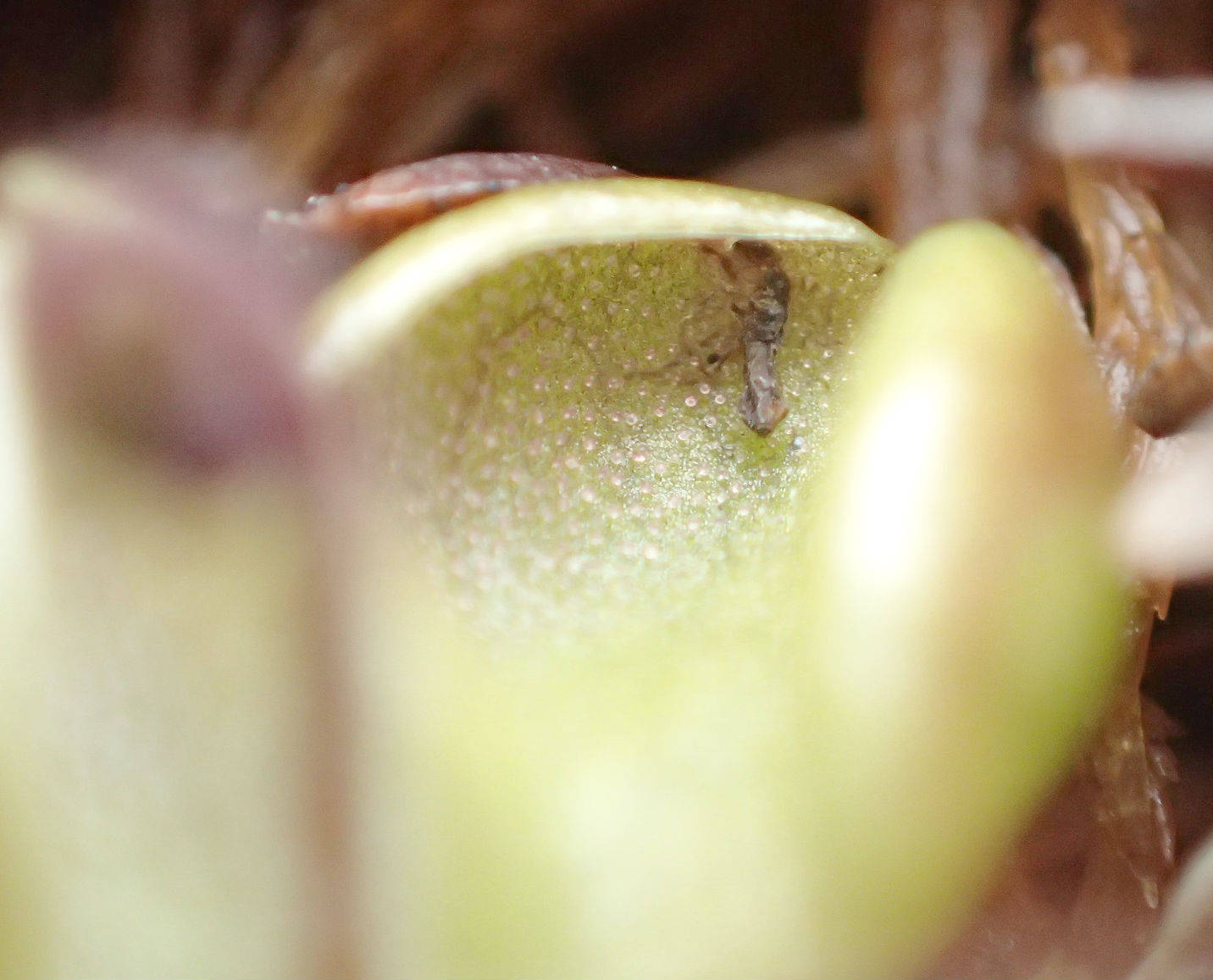At first glance the insect-eating hairy butterwort, one of the smallest flowering plants on the Refuge at about two inches tall in full flower and sporting only 2-4 tiny leaves, seems incomparable to the famous, fictitious, voracious Audrey II from the musical, Little Shop of Horrors. What makes the equally hungry but far smaller butterworts far more interesting to me is that they are really real. With effort you can witness these and other carnivorous plants eating animals in a wetland near you.
In contrast to much of the Lower 48 where draining of wetlands and over-collecting has led to scarcity of carnivorous plants, they are still quite common in our area. The hairy butterwort is one of seven carnivorous plants known from the Kenai National Wildlife Refuge (two sundews, three bladderworts, and two butterworts), making our area comparatively rich in carnivorous plant diversity. You can see five of these species without walking very far into the wetland around Headquarters Lake in Soldotna.
It is no coincidence that all of our carnivorous plants reside almost exclusively in wet, nitrogen-poor habitats. Any experienced gardener can tell you that most plants require plenty of nitrogen in the soil to be productive. In wetlands where nitrogen can be extremely scarce, carnivorous plants attract, capture, and digest nitrogen-rich insects to supplement their otherwise meager diets.
Butterworts employ a unique flypaper-like mechanism to capture and digest their prey. Two kinds of sticky glands coat the upper surface of the prostrate, spreading leaves. Taller stalked glands trap small insects in goo. Responding to contact with nitrogen-rich animal proteins, unstalked glands on the leaf surface then release digestive enzymes. Slowly, over a matter of hours, the nearest leaf edge rolls in toward the dead animal, aiding in digestion. Eventually the leaf flattens again, ready for the next victim.
Larger insects easily escape from the microscopic glands, so butterworts’ animal diet comprises smaller springtails, midges, and aphids. They can also obtain nutrition from pollen and other protein-rich plant parts that end up stuck on their leaves, making butterworts one of the only herbivorous plants.
The sticky glands can only be used once, and hard-to-digest insect skeletons persist on the leaf surface, so the leaves lose effectiveness as traps over the course of the summer. For this reason these plants capture progressively fewer insects as the growing season progresses.
Interestingly, butterworts interact with insects not only as potential food items. Flying insects pollinate the attractive, showy flowers.
I was surprised to learn that butterworts have a long history of use by humans, mainly in dairy products. Historical accounts describe a process where milk was inoculated with mucus from butterwort leaves, leading to a culture of specialized Lactococcus bacteria that made a thick, yogurt-like product. Tettemelk, one of many names for this food, has been prepared in Scandinavia for at least 150 years and is produced commercially today. The process no longer involves butterworts, but recent DNA evidence confirmed that the bacteria used in tettemelk production today are identical to some of the many kinds of bacteria residing on leaves of butterwort.
Proteases (enzymes that break down proteins) from butterworts were also used to curdle milk and tenderize meats up through the early twentieth century, but since then the practice has ended as other sources of proteaze have replaced butterworts.
I encourage you to don your rubber boots and explore your neighborhood wetland to see butterworts and our other carnivorous plants for yourself. Hairy butterworts can be spotted most easily in early to late June when their pretty purple flowers make them more conspicuous in lowland fens. The common butterwort, a larger and showier relative of the hairy butterwort, can be found in wet places in the Kenai Mountains.
Matt Bowser serves as Entomologist at the Kenai National Wildlife Refuge. You can find more information at http://www.fws.gov/refuge/kenai/ orhttp://www.facebook.com/kenainationalwildliferefuge.

